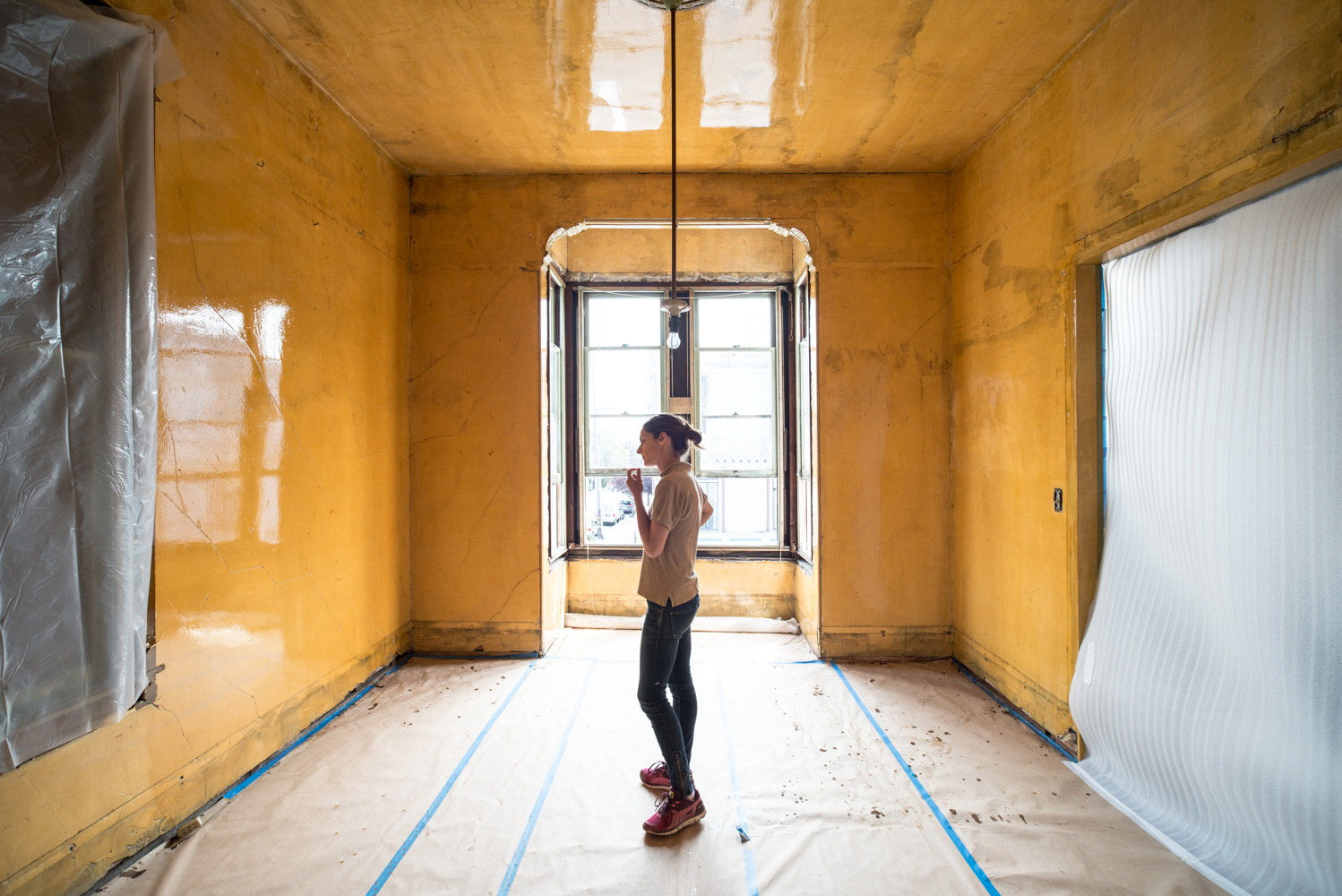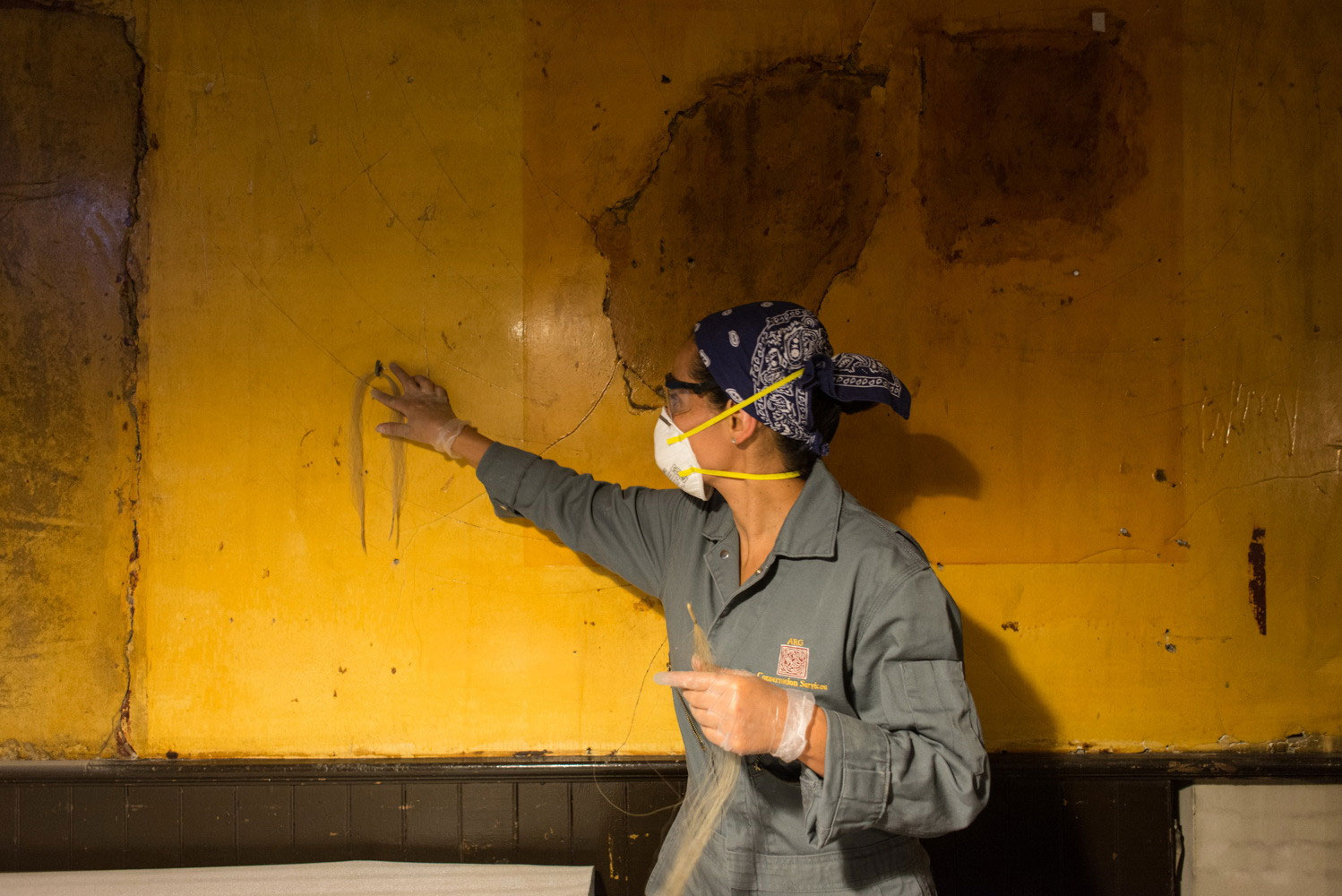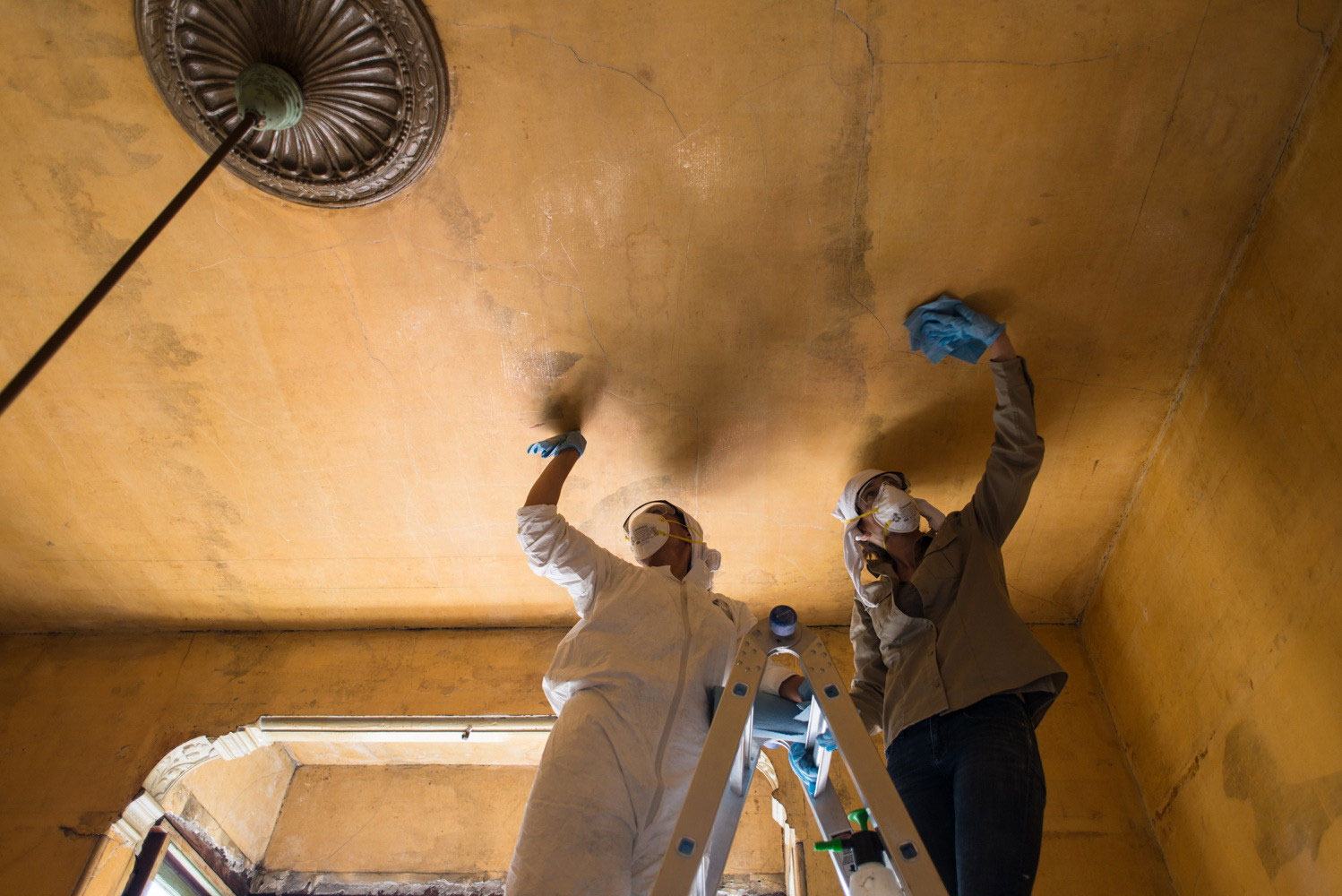
Varnish as Art: Restoring the Finishes at 500 Capp Street
I remember the first time I walked into David Ireland’s house, not long after the 500 Capp Street Foundation hired us to handle the conservation of this building that was also a major work of art by an amazing artist. I was immediately drawn in by the warm, lustrous, amber-colored walls—the result of the layers of polyurethane varnish he’d applied to them. It was inspirational to see such a contemporary finish in a historic home.
None of us here, except David Wessel, had known about Ireland or his approach to art beforehand, and I think it was better that we didn’t. We came in with fresh eyes, which meant we could analyze all the finishes in a purely scientific manner. We looked at historical photographs, documentation, and the physical existing conditions of materials for all our conservation treatments.

As an architectural conservator, I was intrigued to see his artistic, contemporary outlook on the historical fabric of the house, which dated back to the 1880s. He had torn away the historic wallpaper and covered the walls in a commercial varnish in order to highlight and expose the building’s history—the cracks, the staining, the scratches, the bumps, the holes, and the effects of building settlement. We had to make sure that some of the holes and cracks we filled in were not holes that Ireland had originally wanted to highlight and expose. Also, it is always challenging and interesting to conserve contemporary materials, as it is somewhat new in the field of conservation. As plastic, commercial paints, aluminum, and other materials have begun to deteriorate, their need for conservation has increased.

My coworker Johana Moreno and I conserved and restored the walls to the period of significance: the time when Ireland lived there. We worked room by room, in coordination with contractors doing other work on the site, such as the seismic retrofitting, the installation of a new electrical system, and the building additions. We sectioned off each room with plastic to prevent the transmission of dust and to keep other workers on site from disrupting and accidently touching conservation work. For us, there would be nothing worse than watching a worker covered in plaster dust break through the plastic barriers! Luckily, that didn’t happen.
Next, we carefully dry cleaned all the walls of general soiling and grime that had built up over the years. We performed selective wet cleaning on areas with heavier staining and soiling. We filled areas with holes and then inpainted them to match the surrounding walls. Cracks were stabilized by injecting plaster. Our last task was to revarnish the walls using a commercial oil-based varnish that would create the same lustrous effect Ireland’s had.

But we couldn’t use the exact same varnish as he had, because it had been discontinued—in fact, that very high-VOC varnish is now illegal in California. So we tested different commercial varnishes and selected the one that best mimicked his. The issue we had with all the commercial varnishes that we tested was that they set too fast, which did not allow the varnish to pool and give that mirror quality that Ireland was able to achieve with his varnish’s slow setting time.
After many tests, which involved polishing surfaces and applying multiple coatings, we found that the best method was to manipulate the application of the varnish. The application method we formulated was difficult, however—it had to be done quickly, efficiently, accurately, and neatly to match the mirror-like quality of the original varnish and to preserve the brush stroke and roller marks Ireland made.
Because of the high degree of difficulty and the skill required to apply the varnish on the walls quickly and accurately in one go, the adrenaline we experienced before applying the varnish to the walls cannot be described! Also, we had to coordinate our movements relative to each other while applying varnish simultaneously to ceiling and walls and in tight spaces. It became almost an orchestrated dance.
At the end of every work day, we were exhausted. But it was worth it to restore the amber glow of those rooms, which are so unlike any other space I’ve ever seen.

Photos courtesy of Takashi Fukuda and the 500 Capp Street Foundation.






